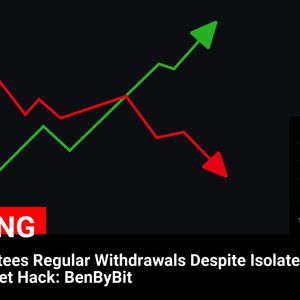Crude oil markets are currently in a state of watchful waiting. Like a coiled spring, WTI futures are holding just above the $70 mark, as investors worldwide hold their breath for any signs of progress from the anticipated Russia-Ukraine peace talks. Will these talks bring relief to global energy prices, or will the oil market continue its volatile dance? Let’s dive into the factors influencing this crucial commodity. Why is WTI Trading Cautiously? The primary driver behind the current cautious sentiment in the oil market is the prospect of peace negotiations between Russia and Ukraine. News of a potential truce, spurred by discussions involving former US President Donald Trump, has injected a dose of uncertainty into the market. Here’s why: Trump’s Announcement: President Trump’s statement about “productive” conversations with both Russian and Ukrainian leaders regarding peace talks has been a significant catalyst. His directive to his team to initiate these discussions has raised hopes for a potential resolution to the prolonged conflict. Anticipated Impact of Peace: Market analysts, like those at Philip Nova, anticipate that successful peace negotiations could lead to a surge in Russian oil supply to the global market. This influx of supply would naturally exert downward pressure on crude oil prices . Geopolitical Sensitivity: The Russia-Ukraine conflict has been a major geopolitical factor influencing oil prices. Any movement towards de-escalation is closely monitored by traders and investors, leading to cautious trading strategies. OPEC’s Role in Stabilizing Oil Prices While peace talks are weighing on potential price decreases, another significant factor is providing some support to WTI and broader oil prices: OPEC’s potential decision to delay planned supply increases. OPEC (Organization of the Petroleum Exporting Countries) , along with its allies known as OPEC+, plays a crucial role in managing global oil supply. Here’s how their decisions impact the market: Supply Management: OPEC+ countries collectively decide on oil production quotas. These quotas are adjusted to balance global supply and demand, influencing prices. Planned Supply Increase Delay: Recent reports suggest OPEC is considering delaying its planned monthly supply increases, initially slated for April. This potential delay is seen as a move to prevent a price collapse amidst potential increased supply from Russia, offering temporary support to current price levels. Trump’s Pressure vs. OPEC’s Strategy: This potential delay contradicts previous calls from President Trump for Saudi Arabia to boost oil output. OPEC’s independent decision highlights their strategic approach to managing the oil market , balancing geopolitical pressures with market stability. Brent Crude Oil FAQs: Understanding the Benchmark To better understand the dynamics of the oil market , it’s helpful to understand benchmarks like Brent Crude Oil. Let’s address some frequently asked questions: What is Brent Crude Oil? Brent Crude Oil is a key benchmark for international oil prices, sourced from the North Sea. It’s categorized as ‘light’ and ‘sweet’ due to its properties, making it ideal for refining into valuable products like gasoline. Key features include: Benchmark Status: It sets the reference price for roughly two-thirds of globally traded oil. ‘Light and Sweet’ Qualities: High gravity and low sulfur content simplify refining. Reliable Supply: North Sea infrastructure ensures consistent production and transportation. What Factors Drive the Price of Brent Crude Oil? Several factors influence Crude Oil Prices , including: Supply and Demand Dynamics: Global economic growth fuels demand, while recessions dampen it. Geopolitical Instability: Wars, political unrest, and sanctions disrupt supply chains. OPEC Decisions: Production quotas set by OPEC significantly impact supply. US Dollar Value: As oil is dollar-denominated, a weaker dollar can make oil cheaper for buyers using other currencies, potentially increasing demand and vice versa. How Does Inventory Data Impact the Price of Brent Crude Oil? Weekly inventory reports provide insights into supply and demand balance. Key points to consider: Inventory Reports: American Petroleum Institute (API) and Energy Information Agency (EIA) reports are closely watched. Decreasing Inventories: Indicate higher demand, typically pushing prices up. Increasing Inventories: Suggest higher supply or lower demand, potentially lowering prices. EIA vs. API: EIA data is generally considered more reliable due to its governmental source, though both reports usually align closely. How Does OPEC Influence the Price of Brent Crude Oil? OPEC’s influence is substantial through production quotas. Here’s how: Production Quotas: OPEC sets quotas for member countries, adjusting supply levels. Lower Quotas: Reduce supply, generally leading to higher prices. Higher Quotas: Increase supply, typically leading to lower prices. OPEC+: Includes non-OPEC members like Russia, amplifying the group’s influence on global supply and Crude Oil Prices . Navigating the Uncertain Oil Market The current oil market is a complex interplay of geopolitical events and supply-side management. The anticipation of Russia-Ukraine peace talks introduces a bearish element, while OPEC’s potential supply adjustments aim to provide a bullish counterforce. Investors are advised to remain vigilant, closely monitoring developments in both peace negotiations and OPEC announcements to navigate these uncertain times effectively. To learn more about the latest Forex market trends, explore our article on key developments shaping Gold and US Dollar liquidity.



















